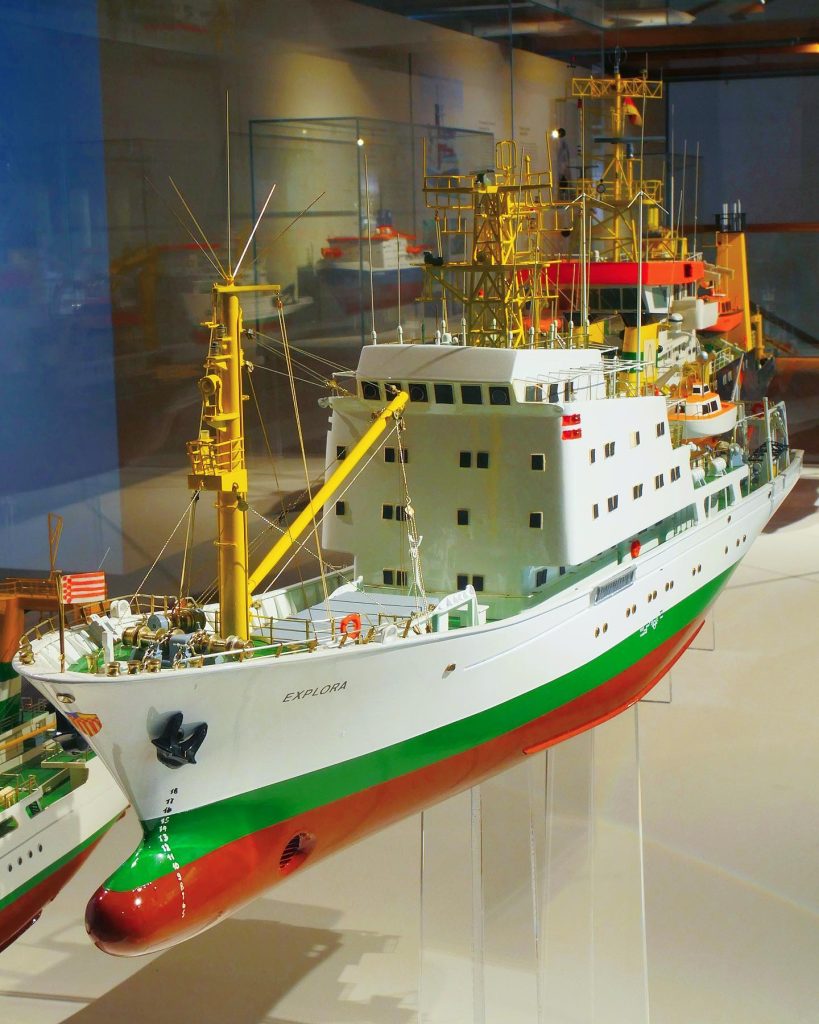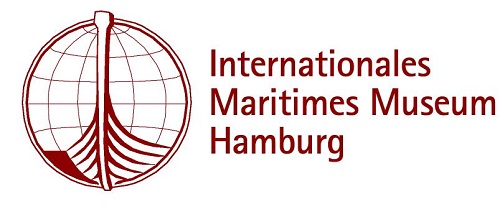
Research vessel Explora. The original yard model the Explora, built in a scale of 1:100 by the Ihlenfeldt & Berkefeld workshop, is displayed in our oceanographic exhibition on deck 7 of the museum.
Behold the Explora, a ship with a German and Italian history. This ship was built in 1973 at the Elsflether Weft AG shipyard, on the Bank of the river Weser. She was a slightly improved sister of the ship Prospekta (built in 1970, renamed Geo Prospector in 1997 and scrapped in 2015). The Explora was the most advanced geophysical research vessel of her time and is still in service almost 50 years after her construction. Her main duty is to use the seismic reflection method to study the sedimentary beds of the continental shelf. This studies are of great interest for the off-shore industry because they can predict the position of oil and natural gas deposits. Her capacities are also extremely useful for oceanographic research. Between 1977 and 1980, she researched the Weddel Sea in Antarctica. Her input won her the honor to have a seamount – that’s an underwater mountain – named after her: the Explora Knoll. Between 2005 and 2006, already under Italian Flag, she explored the Ross Sea on the other side of Antarctica. She discovered a series of seamounts that have since been bapticed OGS Explora Mounds.
In 1989 the ship was acquired by the Instituto Nazionale di Oceanografia e di Geofisica Sperimentale, Trieste. She then became the OGS Explora. She has since been updated to be able to conduct research in many oceanographic fields. She has been chartered to international offshore companies to conduct surveys in the Mediterranean and the Atlantic but has kept focus on her scientific duty. She has been on duty on both the Arctic and Antarctic Seas, and participated in numerous international projects. Still fit for duty, we hope there are many research projects for her to come.
The original yard model the Explora, built in a scale of 1:100 by the Ihlenfeldt & Berkefeld workshop, is displayed in our oceanographic exhibition on deck 7 of the museum.
